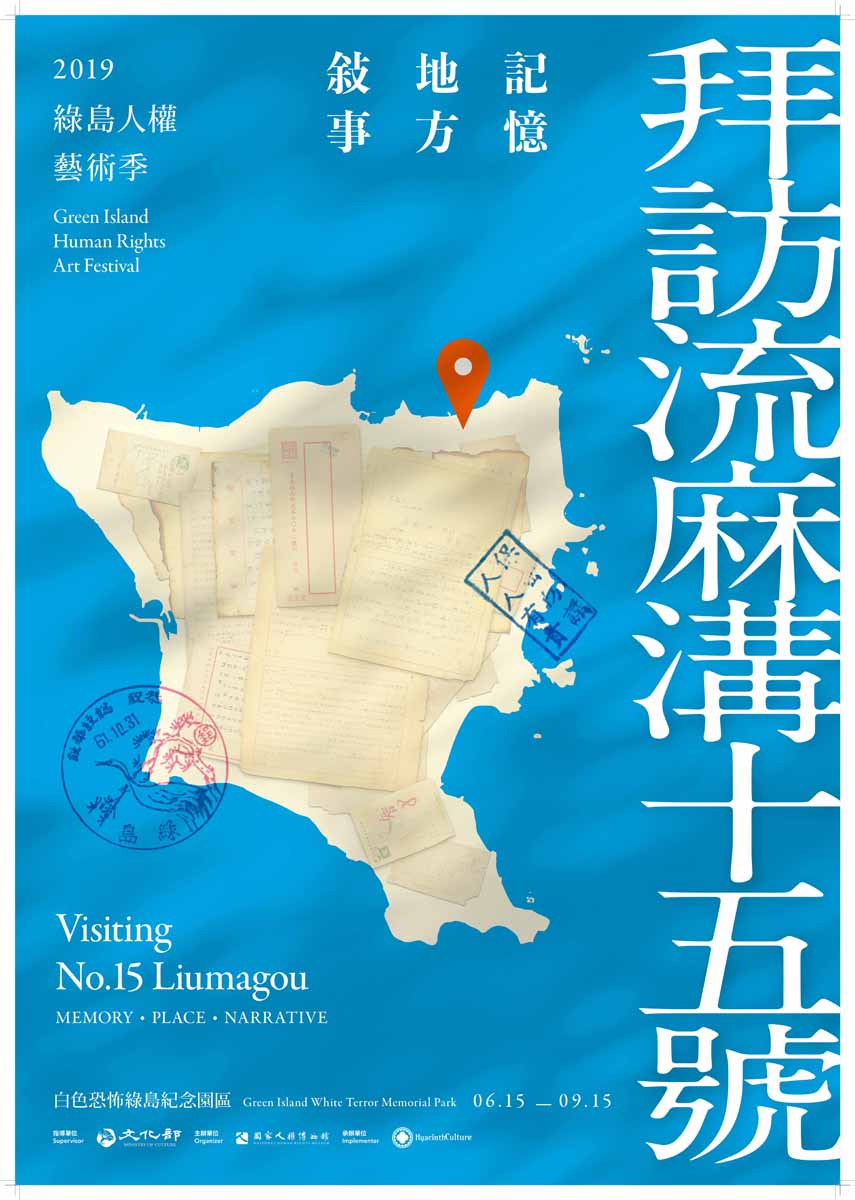2019 Green Island Human Rights Art Festival:Visiting No.15 Liumagou memory • place • narrative

DURATION: 2019-06-15 ~ 2019-09-15
OPENING: 2019-06-15
VENUE: Green Island White Terror Memorial Park
Visit Website
Curator:Sandy Hsiu-Chih Lo Co-curator:Phebea Chun-Yi Shen Artists:Gieh-Wen Lin , Hong-John Lin, Jo-Han Cheng, De-Chuen Wu , Jun-Honn Kao , Jui-Chung Yao , Watan Uma , Wan-Shuen Tsai , Hai-Ru Tsai, Yannick Dauby, Bulareyaung Dance Company、Libera work-gang Visiting No. 15 Liumagou: Memory ‧ Place ‧ Narrative “No. 15 Liumagou" was once the location of the common domicile of political victims who were detained on Green Island. Today, however, the address can’t be found in the postal system or on a map. Therefore, how can we start the voyage of discovery to explore this place “that-has-been” (ça-a-été)? Generally speaking, whether from the perspective of space or time, the first thing you confront in knowing a certain place is the memory associated with that place. Memory not only connects the past and the present, but also relates to construction of the future; whether personal or collective, memory is closely related to the society and environment in which it is located, and it is also inseparable from a specific time, space, and event. The collective memory of a locality has a cohesive emotional structure, including a common value system and code of conduct, which shapes the sense of collective belonging and identity and projects an ideal vision of the future. However, collective memory can also become a social contradiction that generates antagonism or forms an oppressive ideology. Therefore, we must examine cautiously the perspective, the instrument, the condition, and the audiences of the narration of memory, as all of these are keys to memory writing. We have to deconstruct constantly those collective memories that stimulate the apparatus of oppression and antagonism. Consequently, what kind of memory does “No. 15 Liumagou” carry? The place where a memory is attached is both a concrete material field and an abstract conceptual idea. People usually hold special emotions toward such a place. For example, the basic desire to find somewhere to live is the most primitive emotional bond between a person and a place. However, the social reality is often frustrating and disappointing. The imagination of "utopia" or “heterotopia” has become a form of catharsis against the topophobia or failed topophilia and functions as an important driving force for the progress of human civilization. "Place" is where the constant dialectical practice occurs between the existing order or ideology and the future vision or utopian ideal. Therefore, what kind of place is "No. 15 Liumagou?” The writing of memory and the shaping of place must rely on narratives to communicate with others. Hence, how to construct the relevant narratives of "No. 15 Liumagou" is a core concern of this art project. The sensibility and poetics of the narrative of art allow artists to be more preoccupied with worlds that are unspeakable, invisible, inaudible, and untouchable. Artistic narratives pay attention to individual differences, emphasizing the cultural concepts of memory, morality, ethics, and rights that belong to the abstract space and non-material areas; they create a new social discourse from the perspective of criticality, autonomy, and liberation and construct the openness of the imagination of the place. In the art project "Visiting No. 15 Liumagou," every participant is a memory curator, a place maker, and a narrator. The memory writing, place shaping, and narrative weaving are open to all. Only in this way are the various future politics and upcoming ethics anticipated. Memory, place, and narrative are the keys to open the heavy chain on the door of “No. 15 Liumagou"; they offer three kinds of plotters for drawing the map of "No. 15 Liomagou." This art project attempts to create a dynamic interactive platform where people can meet, communicate, and reflect each other’s souls with their own memory writing, place making, and narrative weaving.